Looking to Boost Your Running Recovery? These Expert Recommended Calf Sleeves May Help
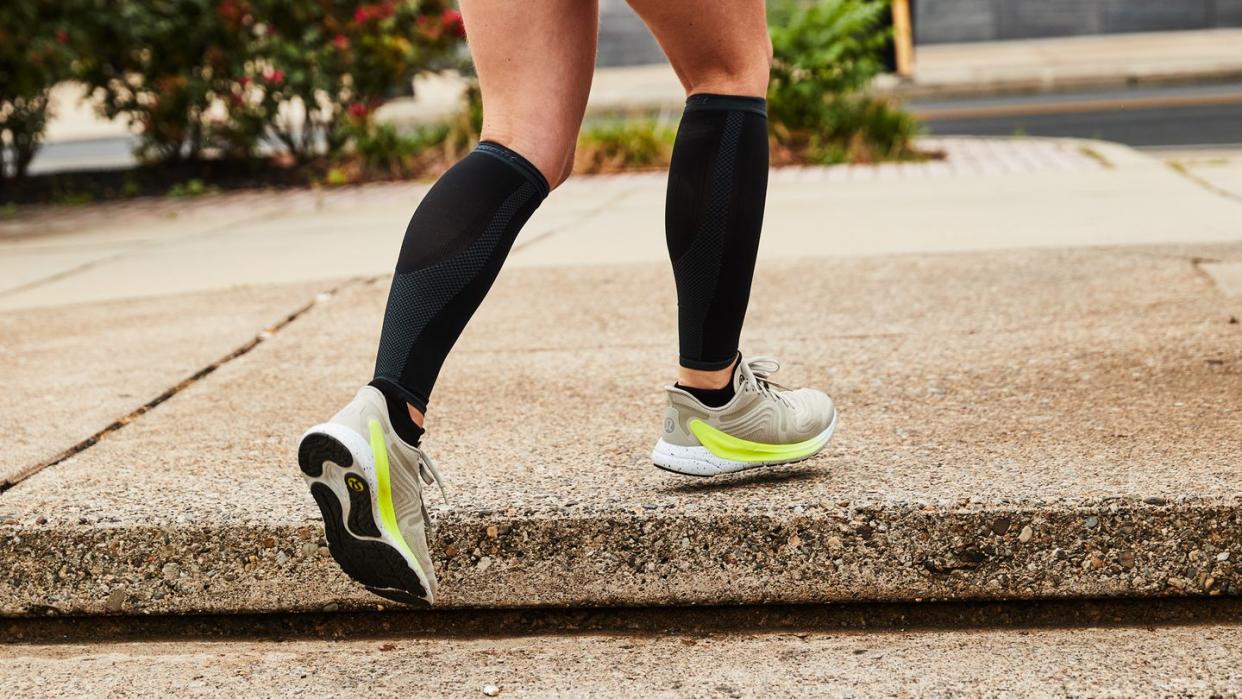
"Hearst Magazines and Yahoo may earn commission or revenue on some items through these links."
Show up to the start line of a 5K in any city in America and you’re likely to find people wearing compression calf sleeves. You’ll see them in the gym and at the supermarket. You’ll find them on the lower legs of delivery drivers, and people with weak or damaged veins. And if you’ve started getting cramped calves or shin splints, you might want to consider a pair of compression calf sleeves, too.
Wearing a calf sleeve can help you recover from workouts and deal with circulation issues in your legs. There are problems they won’t solve, though, especially if they don’t fit right. We spoke to four physical therapists and a running coach to learn how compression calf sleeves work, when to use them, and help you find the best calf sleeve for your training needs.
Take a Beat to Recover: Best Foam Rollers ● Best Massage Guns ● The Benefits of Heat Therapy for Runners
Best Calf Sleeves
Best Overall: CEP The Run 4.0 Compression Calf Sleeves
Best Value: Copper Fit Calf Compression Sleeves
Best Light Compression: Zensah Running Leg Compression Sleeves
The Experts
Amy Parkerson-Mitchell, MSPT is a physical therapist, running coach and triathlete based in Overland Park, Kansas. Her marathon resume includes Boston, Chicago and New York City, and she also owns and runs the Roadrunners of Kansas City running club.
Austin Misiura, DPT, OCS is a board certified orthopedic physical therapist (OCS) who received his DPT from the University of Miami in 2012. He teaches athletes and active people how to eliminate pain and improve performance out of his clinic, Pure Physiotherapy, in Miami’s Coconut Grove neighborhood.
Peter Dills, DPT is the clinical director of Therapeutic Associates Physical Therapy in North Portland, Oregon. A certified therapeutic pain specialist and manual therapy specialist, Dills is particularly passionate about treating runners, especially foot and ankle disorders.
Ryan Sweeney, DPT earned a doctorate in physical therapy at Duke University in 2013 and now works as an orthopedic clinical specialist and muscle activation technique specialist at Specialists in Sports and Orthopedic Rehabilitation in Overland Park, Kansas.
Carl Leivers is an Atlanta running coach and USA Track & Field Certified Level 2 Endurance Coach. He coached cross country and track and field at Emory University for eight years before turning his talents to a broader swath of runners, targeting form analysis, running group workouts and coordinating training plans.
Dan Roe, author of this article, is a former Runner’s World test manager and a former Division I distance runner at the University of Missouri. A chronic case of achilles tendinitis introduced him to the world of compression calf sleeves and socks.
What Do Calf Sleeves Do?
Like compression tights, calf sleeves are designed to help you recover from exercise by applying pressure to your lower legs, encouraging blood flow to the area. When you finish a hard run, microtears in your muscles exude waste products that cause inflammation. In theory, calf sleeves help speed up that process.
“Any time you can promote blood flow to an area that is undergoing an inflammatory process—either because you purposefully did that through training or because you have an injury going on—and flush out the bad products your body exudes and get nutrients to the area, that is going to help minimize delayed-onset muscle soreness and help recovery,” said Amy Parkerson-Mitchell, MSPT, a Kansas-based runner and physical therapist.
Though widely adopted by athletes and physical therapists, the correlation between compression clothing and improved workout recovery is primarily anecdotal. A 2022 review of 183 scientific studies testing the effectiveness of both compression and kinematic clothes suggests that they do not make a measurable difference in muscle recovery.
Despite that, physical therapists like Parkerson-Mitchell still frequently recommend them because there’s no evidence they do any harm, and some athletes swear that they help.
“When a runner asks me if they should wear them while running, I say, ‘Does it make you feel better?’ If it makes you feel better then there’s no reason why you shouldn’t,” she said.
There’s no one perfect time to wear a calf sleeve. Some people prefer to wear them while running. Others prefer to wear them after exercise to enable recovery. Some like to do both. Knowing that you’re buying a product backed by evidence that’s more anecdotal than scientific, it’s hard to go wrong with whichever method gives you the most relief.
What to Consider in a Calf Sleeve
Calf Circumference
Calf sleeves are not one-size-fits-all. Most brands will ask you to measure your calf at the thickest point to determine your size, so grab a measuring tape and figure out what you need before you go shopping.
When comparing sleeves, keep in mind that not every option fits “true-to-size.” In our picks, we call out sleeves where user reviews have suggested it may be wise to buy a size up. If you buy online, check return policies, too. These garments stretch, which means you may not be able to return them after trying them on.
Leg Length
Most calf sleeves come in a single leg length for each size. Calf circumference should be your primary concern when choosing the size of your sleeve, as it will have a greater impact on how the sleeve fits. Still, you don’t want a sleeve that will restrict you at the ankle, nor do you want an overly short sleeve that isn’t graduated to match your leg length.
“You want to feel like you have full mobility through the ankle so it doesn’t interfere with your gait at all,” said Carl Leivers, an Atlanta-based running coach. “You want it to feel snug and comfortable as you’re trying them on because there will be a little swelling as you’re exercising, and you don’t want them to be so tight that your feet start to go numb.”
Compression Level
Some calf sleeves squeeze tighter than others. The majority of calf sleeves on the market compress at 20- to 30 Millimeters of Mercury (mmHg)—the same measurement used to measure blood pressure. This medical grade level of compression hugs your legs tight, but not enough to cut off circulation for most people. That’s perfect if you plan to wear your calf sleeve as a post-run recovery aid.
If you plan to wear a calf sleeve during a run or workout, you should look for a sleeve with less compression, as you don’t want to suppress blood flow while you’re working out, said Austin Misiura, a board certified orthopedic physical therapist at PurePT in Miami. Look for a lighter sleeve with 15-20 mmHg, which offers a slight hug rather than a tight squeeze. Low-compression sleeves also tend to be thinner and more breathable, which makes them more comfortable while exercising.
How We Selected The Best Calf Sleeves
To find the best calf sleeves, I relied on the recommendations from a panel of experts–four physical therapists and a running coach–who told us which calf sleeves they recommend to their clients. As a former gear reviewer at Runner’s World who has run with calf sleeves for years, I also had some thoughts on the matter, based on my personal testing experience.
In addition, I surveyed thousands of user reviews at major retailers, including Amazon, Walmart and Fleet Feet, to identify the compression calf sleeves that stood up to the needs of PTs and everyday runners.
The Run 4.0 Compression Calf Sleeves
CEP’s background is in medical compression wear, so it’s no surprise they nailed the basics in their runner-oriented compression calf sleeves. “They use high quality materials and have done a great job ensuring that their compression profiles are actually graduated appropriately,” said Peter Dills, DPT and clinical director at Therapeutic Associates North Portland.
Using graduated compression, with a tighter fit at the ankle than the calf, helps flush waste products up toward your heart rather than letting blood pool in your lower legs. Dills said he personally uses this sleeve to recover between runs.
The nylon and spandex construction wicks moisture to prevent overheating or soggy sleeves in the rain, and a silver treatment helps manage odors. It also fits as advertised, ensuring you get the appropriate amount of compression based on your calf size.
“The fit is important, so if you have something that’s too tight or too loose that wouldn’t be helpful,” said Parkerson-Mitchell, adding that she regards the CEP sleeves offer “good, quality compression” for recovery.
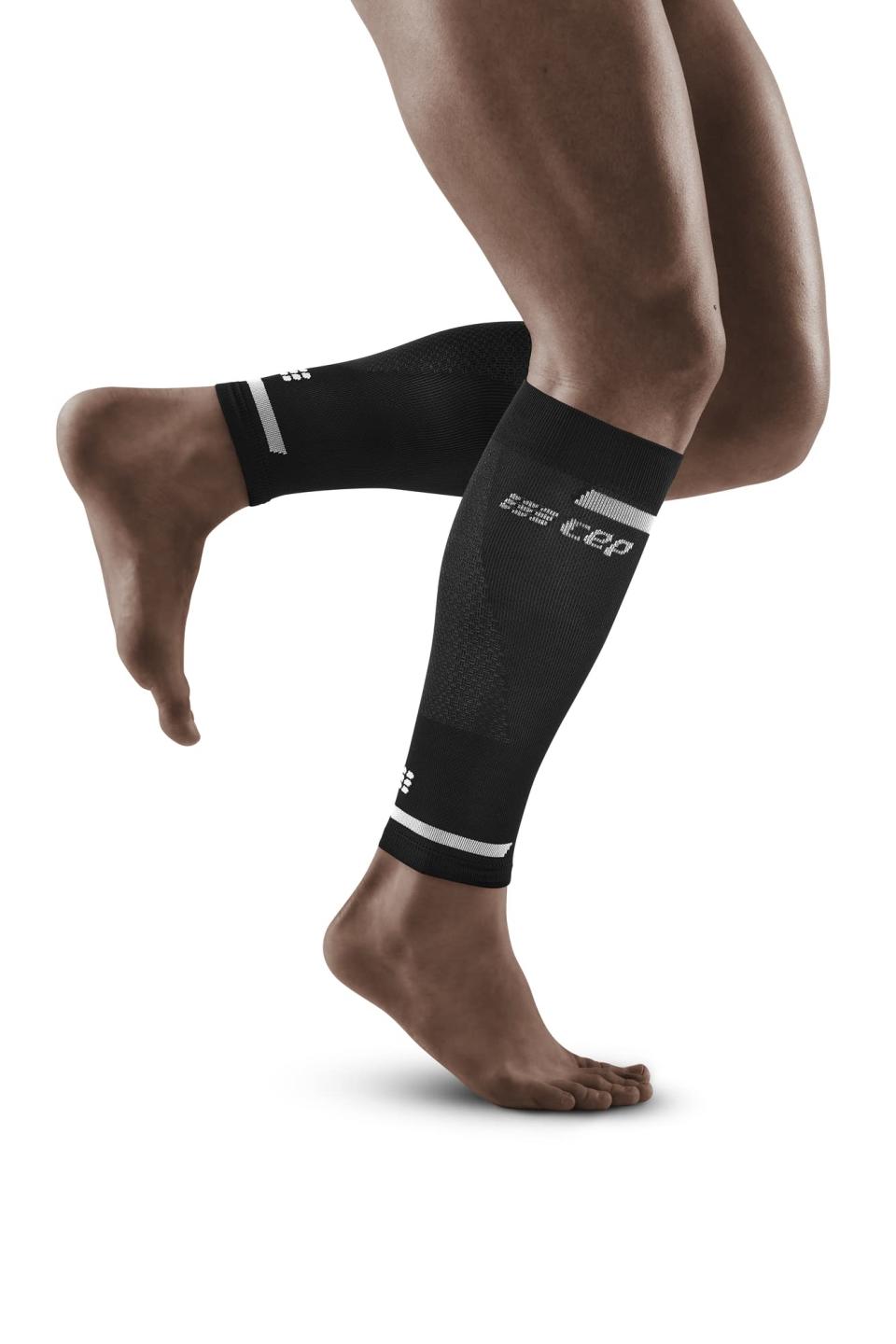
The Run 4.0 Compression Calf Sleeves
amazon.com
Calf Compression Sleeves
For a low-cost introduction to compression calf sleeves that are comfortable at home or for wearing on the run, Ryan Sweeney, DPT and clinical director of Specialists in Sports and Orthopedic Rehabilitation in Overland Park, Kansas, recommends Copper Fit based on its broad appeal with his clients.
“The feedback that I continually get is that Copper Fit is the favorite,” said Sweeney. “Their price point is fair, they tend not to bunch up, and people say that they breathe better than other sleeves. People also tend to be willing to wear them more often than not.”
The copper woven into the sleeve’s nylon-spandex blend fights odor, making these lightweight compression sleeves great for the gym or your next training run. However, the company doesn’t publish compression statistics and only offers two sizes, so some runners may struggle to find the right fit.
At less than half the price of our other picks, however, it’s hard to argue that the Copper Fit sleeve isn’t a great bargain.
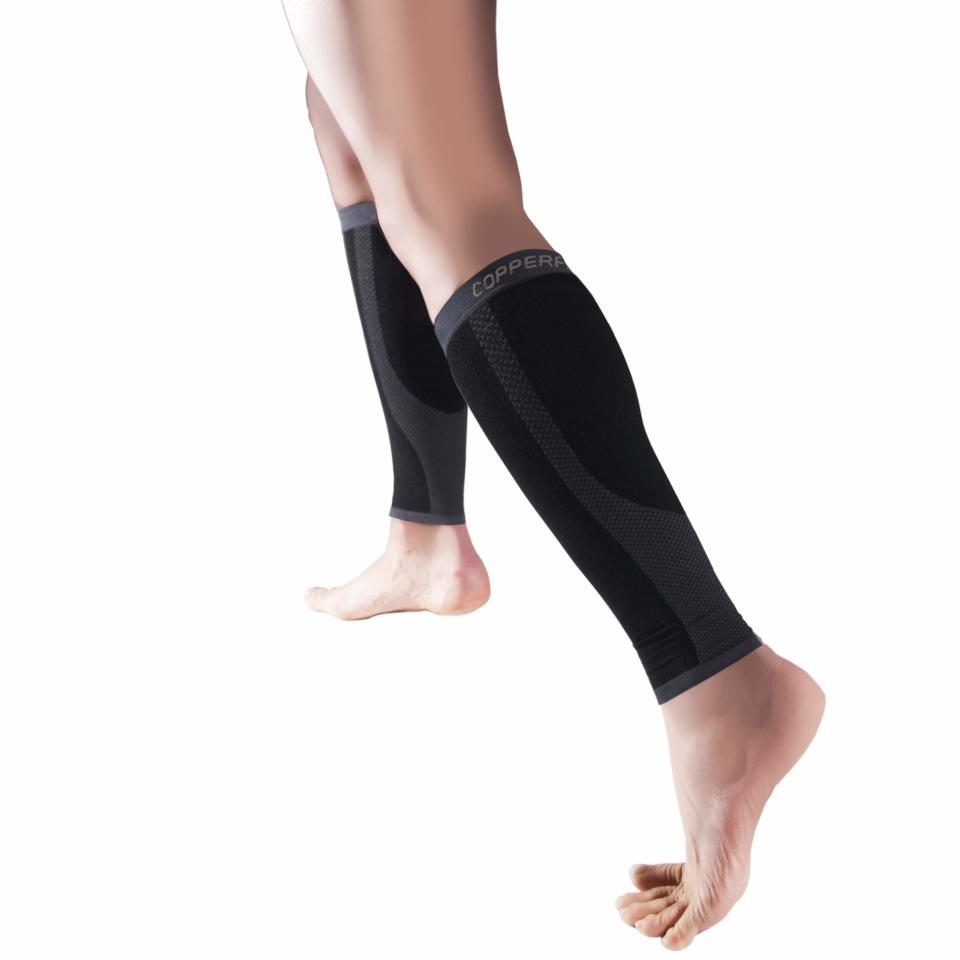
Calf Compression Sleeves
amazon.com
$14.99
Running Leg Compression Sleeves
Zensah compression sleeves tend to fit snug, but not too tight, making them ideal for wearing throughout the day or while traveling. Some runners prefer their light compression and breathable fabric, especially if they plan to wear the sleeves while they run.
“(Compression sleeves) can help you feel good a little longer into a run due to reduced fatigue primarily through reduced muscle vibration,” said Leivers, adding “I personally wear Zensah calf sleeves around the house after a run. I don’t feel the compression is so high that I have to worry about blood pooling in my feet.”
The Chevron-shaped raised ribbing on the front of the sleeves helps fight shin splints, Zensah claims, by stabilizing the tissues around the shin and lifting superficial tissues to help flush out waste products. With a rainbow of colors to pick from and their popularity among runners, it’s a versatile option if you’re looking for a calf sleeve you can run in.
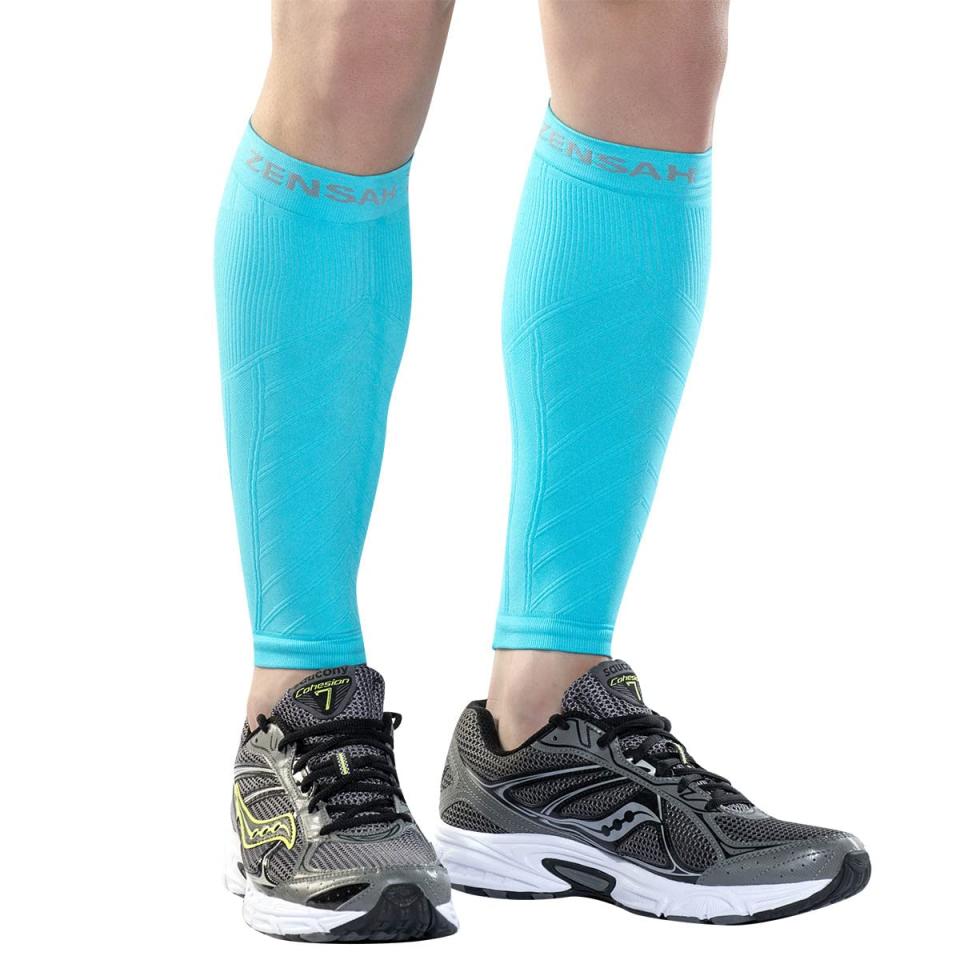
Running Leg Compression Sleeves
amazon.com
$39.99
Answering Calf Sleeve Questions With Our Experts
Should I wear compression calf sleeves or compression socks?
It depends on what part of the leg you’re trying to target. Go for compression socks if you need support for your ankle or achilles, or to deal with a plantar fasciitis issue, Parkerson-Mitchell said.
If you’re dealing with tightness, soreness, or an injury in your calf muscles, a compression sleeve will fit perfectly. Technically, a sock could also work to treat calf issues, but many runners prefer a sleeve over the sensation of limited ankle mobility that can come from a tight-fitting compression sock.
How should a compression calf sleeve fit?
Compression socks are designed to compress, so they should fit tight. Imagine your calves are getting a firm and supportive (but not restrictive) hug from the material.
Our experts recommended a maximum of 30 mmHg of compression for most runners, but that may be too much for some. You want more compression near the ankle and less compression around the meatiest part of your calf muscle, with the sleeve spanning most of the shin bone while allowing the knee and ankle to move freely.
Also pay attention to the tightness at the ends of the sleeve. “If the borders are too tight, that is actually counterproductive for blood flow and may limit performance,” Misiura said. “If it’s too tight at the top or bottom, you will see an indent in your leg when you go and take it off.”
Is there any reason why I shouldn’t wear compression calf sleeves?
There are some people who should abstain from wearing compression sleeves. Parkerson-Mitchell said people with blood clots and compartment syndrome should avoid calf sleeves, as well as people with diabetic neuropathy, numbness or tingling in their feet. “You have to be careful about trapping nerves (with diabetic neuropathy),” she said.
Runners should also avoid using compression calf sleeves to run through an injury that’s causing swelling in their lower legs. “If you have a swollen tendon or joint, you really shouldn’t be running,” Misiura said.
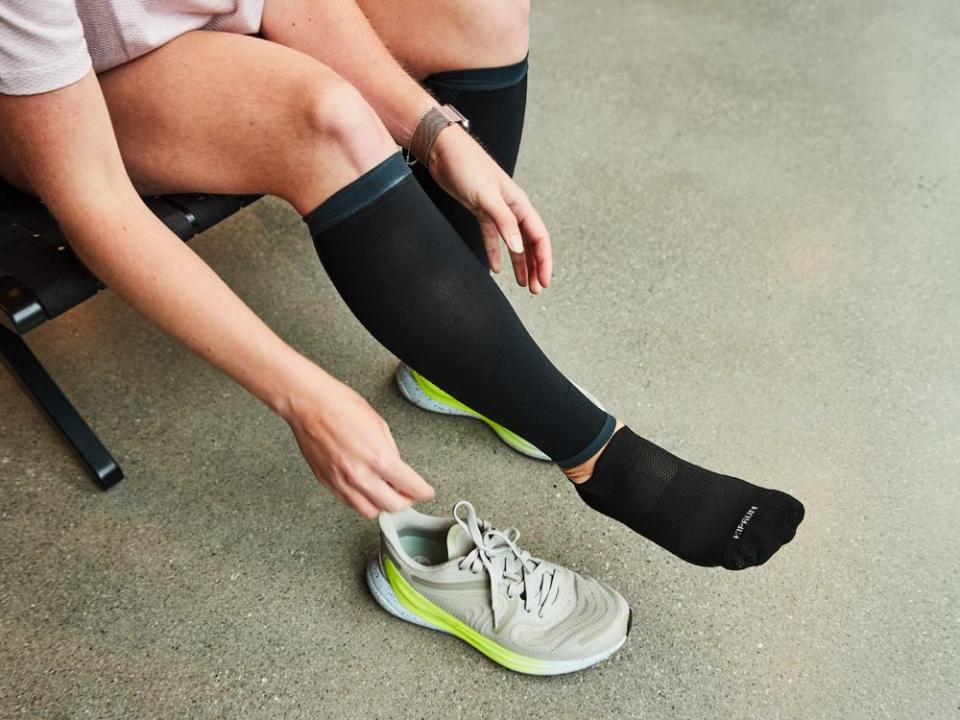
You Might Also Like

